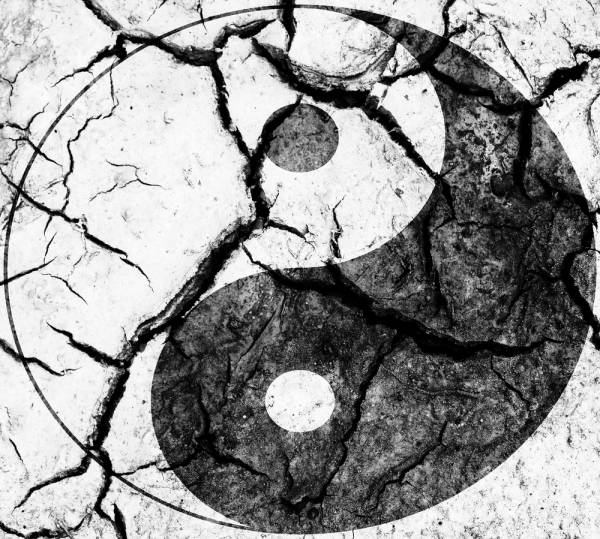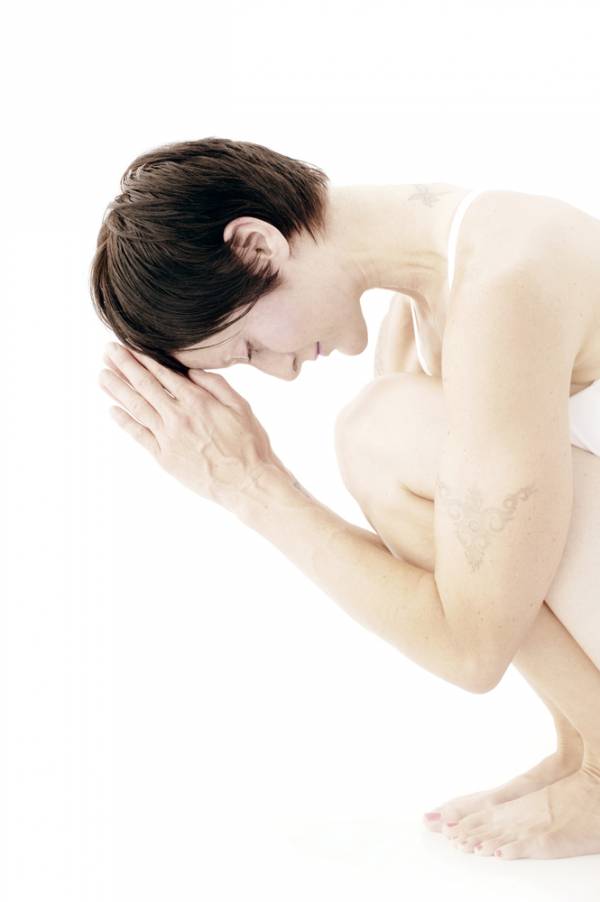Last week I pointed out that it is a lack of balance that leads us to pain, whether it is too much exercise or too little. Balance, though, goes beyond just what we do physically. Balance also refers to our lives personally and professionally. I have learned the lesson many, many times that a lack of balance, like overtraining, can lead to pain. However, there are other imbalances that can lead to breakdown and pain as well. One I’ve come to know quite well in this past year is working too much. While on the surface, being a workaholic may seem more mentally and emotionally draining, it can also lead to physical pain. Just like overtraining with exercise, it is quite possible that the stress associated from work and personal issues can and does lead to physical injury.
Pain is interesting because we tend to think of it as a localized thing. We evaluate pain right where it exists. If your knee hurts, your first thought tends to be “what’s wrong with my knee?” Indeed, sometimes the lack of a sound structure in an afflicted area is a culprit of pain, but more often pain is much more complicated and deeper than that. As any good physical therapist can tell you, knee pain, for example, usually goes much deeper than the knee. The muscles in and around the hip, the glute, and the lower lumbar have a lot to do with how we walk, run, and move and therefore how our knee feels. Still, as deep as many of us might get physically in evaluating what ails us, most stop there. Is it also possible, that beyond the body being in balance, for optimal health, the mind must be as well?
Look no further than the example cited above (stress) to know that there is much truth to the mental being associated with the physical. The opposite is also true – The physical affects the mental. How do you feel mentally when your body is in severe pain or when you are really sick? You feel mentally down. When our bodies are run down, we feel it mentally, and when our mental state is not optimal, our bodies also shut down.
So, what manifests in the body when we are angry, depressed, or stressed? Furthermore, what happens in the body when we push emotions aside and don’t deal with what we are feeling? Pushing through physical pain is a surefire way to get injured. In turn our mental state is affected. I know, as an avid fitness guy, when my body is not in its optimal state, my mind isn’t right either. So, pushing through emotional pain is also a good way to get injured, both emotionally and physically. If the physical can become mental, then the mental can become physical.
A few years ago, I happened to pick up the book Healing Back Pain: The Mind-Body Connection by Dr. John Sarno. Sarno’s contention is that back pain stems from perfectionism and, in particular, repressed rage. If we think metaphorically about the spine, we think of our backbone as the foundation, what keeps our posture upright and moving optimally. Our back carries the load, so to speak. We also carry loads or burdens emotionally. Sarno contends that the chronic pain in our back is a direct result of our mental state.
 Sarno’s theories are controversial in the mainstream medical community, but is it possible that these two realms (the physical and emotional) are interconnected? If an athlete can harness the positive powers of confidence, visualization, and affirmations for a successful outcome, then surely dwelling on negativity and repressing emotion can also adversely affect performance and what is manifested in the body.
Sarno’s theories are controversial in the mainstream medical community, but is it possible that these two realms (the physical and emotional) are interconnected? If an athlete can harness the positive powers of confidence, visualization, and affirmations for a successful outcome, then surely dwelling on negativity and repressing emotion can also adversely affect performance and what is manifested in the body.
A personal case study: Recently, I suffered another injury that put me on the sidelines. This time around, the pain in my body for once didn’t stem from too many punches thrown, miles run, or heavy deadlifts. This time around, perhaps the most damaging of all the things got to me – stress. I felt the burden right where I am most vulnerable, my back.
The stress started earlier in the year when I started taking time off work locally to go work on the road. It wasn’t enough that I was working seven days a week at home. Recently I took an international work trip, which was thrilling, yet grueling, and I literally ran myself right into the ground in the process. I had been running in both a professional and personal sense for too long and after my trip, my body shut down. I felt pretty blue emotionally when my body gave me the message that enough was enough.
Still, despite that shut down, I didn’t completely get the memo. Instead, I did what I usually do – I treat the symptoms (ice, heat, sports massage, the chiropractor or acupuncture). Sometimes, I even rest a bit. Taking some time off combined with these therapeutic modalities usually does the trick. Not this time. After my trip and hitting the wall, my back completely seized up on me. Now I have a history of lower lumbar issues, but this time my back pain was different – there was no physical cause, such as an athletic or acute injury.
 My back was in severe pain almost to the point of me being completely bedridden. My body was again giving me a message. I got to thinking about Sarno’s book and this theory of his about repressed rage and buried emotion. I thought to myself, “What might be causing me this burden?” And then it occurred to me. I needed to forgive someone, as well as myself, for something in my past. So, with that in mind I set that forgiveness as an intention in my life. Incidentally, my back started feeling better. Now maybe my back just needed some rest. Maybe the therapeutic stuff I did helped as well. Maybe I also started thinking the right thoughts. And maybe they all worked together.
My back was in severe pain almost to the point of me being completely bedridden. My body was again giving me a message. I got to thinking about Sarno’s book and this theory of his about repressed rage and buried emotion. I thought to myself, “What might be causing me this burden?” And then it occurred to me. I needed to forgive someone, as well as myself, for something in my past. So, with that in mind I set that forgiveness as an intention in my life. Incidentally, my back started feeling better. Now maybe my back just needed some rest. Maybe the therapeutic stuff I did helped as well. Maybe I also started thinking the right thoughts. And maybe they all worked together.
The point is the universe has a way of giving us what we need to work on until we get the message. Our bodies will tell us when there is pain, but our job is to dig deep in assessing that pain. Our job is to strive for balance. Our job is to be a student of both the body and the mind. Where is there pain in our life? What is the motive for how we treat our mind and in turn our bodies? We must ask such questions, pay attention to the signs, and let pain be our guide.
In the third and final part of this series, we will look at the concept of balance and optimizing balance in our physical, professional, and personal lives.
Missed part one? Read: Facing the Pain: Let It Be Your Guide
Photos courtesy of Shutterstock.






